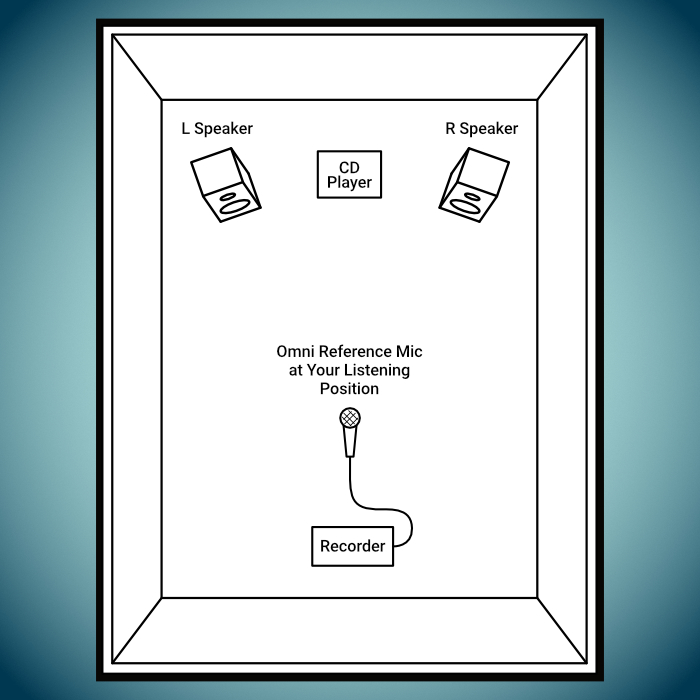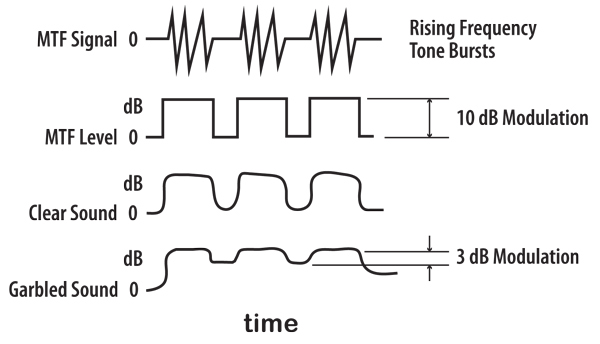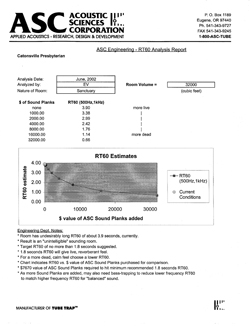The MATT Test
Music Articulation Test Tones
Musical articulation is one basic requirement that must be met by nearly every audio system. This test has been developed to record and display the “fast tracking” capability of the audio chain. If you listen to the test signal over headphones you will hear what the fully articulate signal really sounds like.
Download the MATT Test signal for free!
In the following diagrams, the test signal has been played and recorded at various listening positions. Figure 2 and figure 3 show how the test signal was actually received at each position. Some portions of each graph will look and sound articulate. This is recognized by sections with a wide vertical “zig-zag” pattern similar to the articulate signature of the test tape printout.
Areas of poor articulation are evidenced by sections of small amplitude zig-zag. The room slurs and garbles the sound of the discrete test tones. Make a copy of each original recording and play it over headphones while studying the printout from the same test. You will quickly learn how the variations in intelligibility as shown in the printout are really very audible.
Testing & Analysis
Check out our options for an analysis of your room.
- With or without acoustic treatments
- Changing your setup and want to know it’s impact?
- Did you get some new gear and want to see its impact on your room?
Source Signal for the MATT

Fig. 1

Fig. 2

Discussion of the Test
The basis of the test signal is a very slow sine wave sweep. It starts at 28 Hz and rises up to 780 Hz, then it drops back down to 28 Hz. It is easier to read the printout when presented in this symmetric form. The linear frequency vs time curve is triangular in shape and takes about 80 seconds to complete.
The slowly changing pure tone signal is then chopped, alternately turned on and off at some particular rate. For the typical music playback system, the test signal is gated at 8 Hz, eight distinct tone bursts per second. A 50% duty cycle is used so each tone is played for 1/16 second and is followed by 1/16 second of silence.
This measures the fast response, dB level curve at the listening position. Specifically, it measures how loud each burst is and how quiet each silent period becomes. The test analysis circuitry can follow as much as a 20 dB drop in level during a 1/16 second of silence. Articulation is the ability of the room to distinctly sound out each audio event.
Two things are noticed in room response curves made from this test. The sound levels may not always drop away during the quiet periods. They may not always rise during the sounding of the tone. In either case, the vertical amplitude swing of the graph will be small and the room is garbling, and slurring the otherwise distinct tone bursts.
The second feature to observe from this test is the changes in overall sound levels. The test signal is EQ’d flat and the vertical zig-zag follows a flat baseline. When the test tone sequence is played into a room, the room resonances and absorption coefficients that change with frequency cause overall sound levels to vary. The zig-zag articulation signature follows this hilly terrain. If the articulation signal were to be smoothed out we would see that its baseline is the traditional “slow sine sweep” room response curve.
When the room is acoustically treated to better develop articulation, two things will be noticed from this test. The room response curve will tend to flatten out, as if the room has been somewhat EQ’d. The second feature will be increased articulation. This is evidenced by a wider swing of the vertical zig-zag line over a greater percentage of the frequency range tested. The “ideal” articulate room measures wide and flat with this test.















